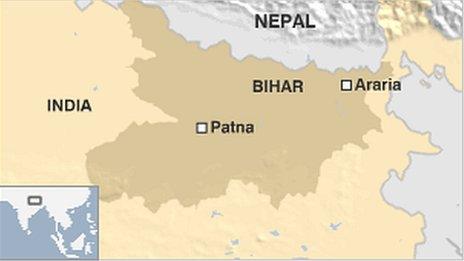Indian sterilisation clinic full of cobwebs and dust
- Published

Thirteen women died after undergoing sterilisation surgery at a government health camp in Chhattisgarh
Thirteen women have died after undergoing sterilisation surgery at a health camp organised by the government in the central Indian state of Chhattisgarh. The BBC's Yogita Limaye visits some of the victims recovering in hospital in Bilaspur and sees the basic, single-room clinic where witnesses say the operations were hurriedly conducted.
Inside the intensive care unit of the Chhattisgarh Institute of Medical Sciences in Bilaspur, one of the four hospitals where the women are being treated, there are five patients.
All of them are young women who underwent sterilisation surgery on Saturday.
The women told the BBC their operations lasted five minutes, as Yogita Limaye reports
There are big beeping monitors by their bedside, where doctors are keeping close tabs on their blood pressure and intravenous saline drips have been placed in their hands.
These women are conscious and stable now, but doctors say when they were brought in they were vomiting continuously and their blood pressure had fallen dramatically.
All the victims at the hospital are between 20 and 35 years of age.
Women were left on mattresses in the hospital corridor after their surgery, as Yogita Limaye reports
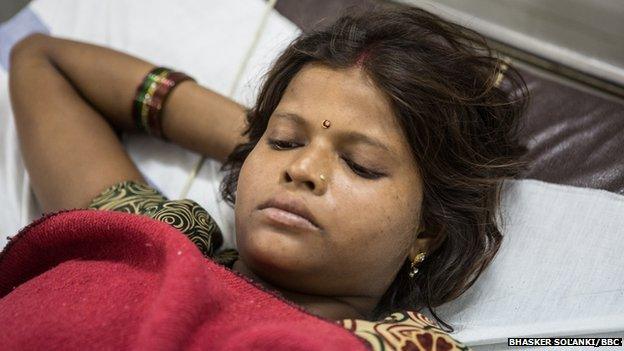
Rita Sirvas says the operation "only took five minutes"
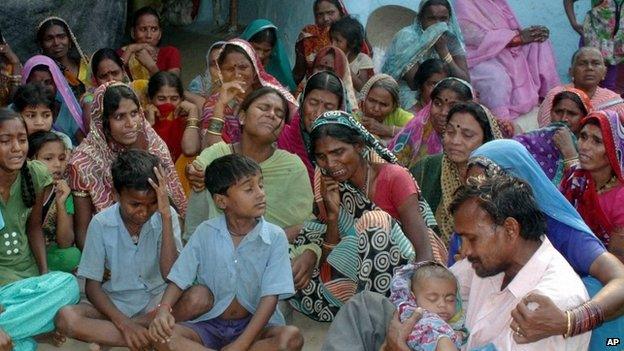
Relatives mourn a women who died after undergoing sterilisation surgery
Doctors say their condition keeps fluctuating rapidly, so it is hard for them to say if anyone is out of danger at the moment.
Rita Sirvas is 26 and has three children. She says she was told about the sterilisation camp by a local health worker, but that she went along willingly.
"The operation only took five minutes," she says. "It didn't hurt me. I was given medicine after it. When I went home I started feeling giddy and began to vomit."
'Cobwebs and dust'
Laparoscopic tubectomy, the operation the women had, takes only about five minutes, but preparing the patient before the surgery and administering anaesthesia means that it should take at least 25 minutes per person, says Dr Ramneesh Murthy, the medical superintendent at the Chhattisgarh hospital.
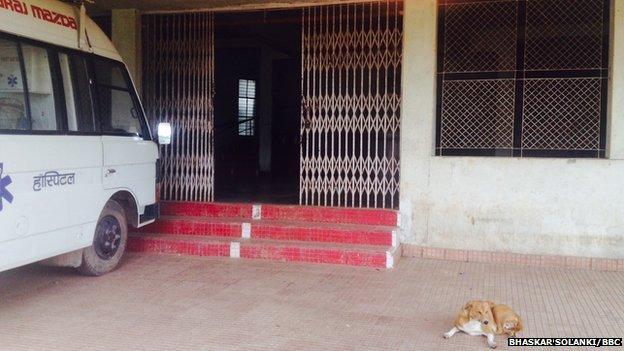
The hospital where surgeries were performed had been closed for a while
"According to government rules, a surgeon should perform at the most 35 surgeries in a day and most doctors do follow this," he adds.
In Pendari though, 83 operations were conducted by a single doctor and his assistant, and villagers allege it was all done in just six hours.
The place where the operations were done is a big white building in an empty patch of land. It looks desolate, with overgrown grass and bushes all around it.
It was a hospital built by a charity, but local people say it has been closed for a while and is only used for government health camps.
Inside, there are cobwebs hanging from the ceiling and walls. There is dust all over the floor.
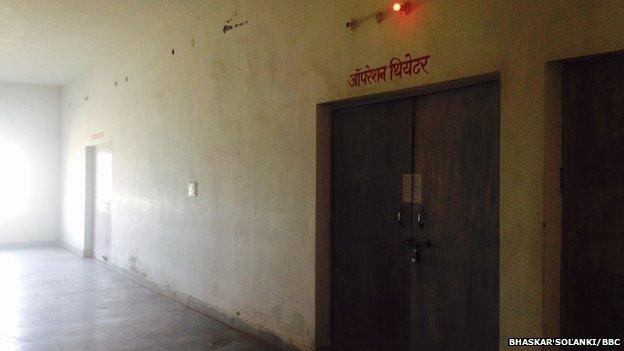
All the 83 women had surgeries in this "operating theatre"
A passageway leads up to the operating theatre, which is locked but its red light is still glowing. It is the only operating theatre in the building so all of the 83 women had surgery in this room.
The caretaker tells me that on the day of the camp, they had laid out dozens of mattresses all over the floor and that's where the women were lying, before and after their surgery.
Four doctors, including the surgeon who conducted the operations on Saturday, have been suspended by the government. A police complaint has also been registered.
Earlier this year though, the same doctor was given an award by the government for performing 50,000 operations.
Mass sterilisation camps are held frequently in India to try to control the burgeoning population of the country.
While they are voluntary, campaign groups like Human Rights Watch point out that since health workers are given incentives by the government to bring in more women for surgery, they are often indirectly pressurised into doing so.

Explaining female sterilisation: Michelle Roberts, Health editor, BBC News website
Female sterilisation works by sealing the fallopian tubes that carry eggs from the ovaries to the womb. This can be done using clips, clamps or small rings or by tying and cutting the tube - this stops the egg and sperm meeting, so pregnancy can't occur.
Eggs will still be released from the ovaries as normal, but they will be reabsorbed by the body instead.
The procedure is very effective and straightforward when carried out correctly and by a highly trained professional. But it is not without risks.
It requires an anaesthetic and there is a risk of damage to other organs during the procedure. There can be bleeding and infection too. It should also be considered permanent - it is difficult to reverse.

- Published12 July 2011
- Published10 January 2012
